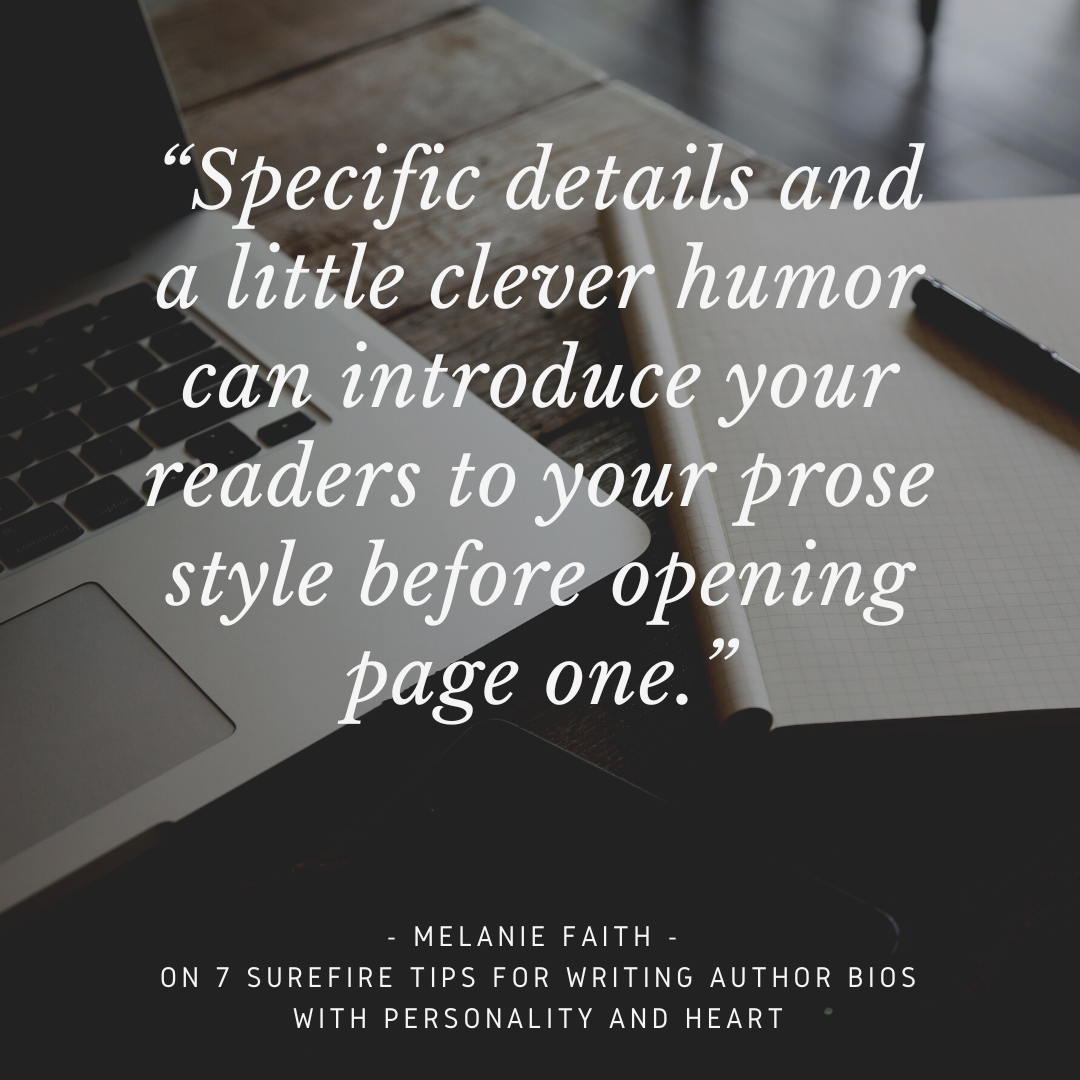By: Melanie Faith
Crafting an author bio is a vital skill we will continue to refine throughout our writing careers. Since bios are part of author websites, query letters and book proposals, submissions to literary magazines, marketing materials for readings, and more, let’s explore a few excellent ways to create bios that have warmth and a welcoming presence.
Add a fingerprint quality.
What makes you most you? Have you played trombone in a jazz band? Do you volunteer for a philanthropic organization? Have you been an avid fan of a sports team for years or have a small business? Are you comically bad at something? Have you held a quirky or tedious job in the past? Such details will lend a personal touch to your bio.
No publications yet? No problem.
Noting any favorite genres or authors who have inspired your work, classes you’ve taken, being part of a workshop, or what you love best about writing will resonate with readers and editors alike.
Make your personalized details precise.
“I like hiking” is not nearly as intriguing as “Her superpowers include hiking the first quarter of the Appalachian Trail three summers ago and obsessing on when she’ll complete the rest.”
Tone it up. What does your bio sound like?
When I visit author websites or read author bios on book covers, my favorites have a distinctive tone. Specific details and a little clever humor, especially if the work is wry, can introduce your readers to your prose style before opening page 1. Conversely, if you write about more-serious topics, like a health crisis or accident, or if you write in genres like Thrillers, Horror, or Science Fiction, match your tone to the mood of your writing—that is, a joke in a Horror writer’s bio could be a mismatch (unless that joke relates to Horror). Picture Book, Middle Grade, or YA authors might include a detail from their own youth. Writers of Regency, Cozy Mysteries, or similar genres often include topics related to what readers of the genres would expect. Many Romance writers include details about their passion for the genre, their partner/spouse/family, and a geographical region, especially if their novels are set in a particular locale.
More than one, twice the fun.
Some literary magazines only want 50 words max while others are open to longer bios. I have a fairly long bio with links to projects and classes at my website’s landing page, a 150ish-word version I send to literary magazines who don’t mention length, along with a 50-word version for those who do. My longer bio includes more variety and personalized details, while my 50-word version mentions my very latest projects and my website. If you have a website or blog or if you’re very active on a social media site, I recommend including that link in any length bio so that interested readers can click to learn more about your writing and also increase your target audience.
Update and integrate new morsels.
Once you have a working biography, life sails onward, but that doesn’t mean you have to keep the exact same biography for years. As you and your writing evolve, it’s important to switch up parts of your bio. Adopted a rescue pup or taken a trip recently? Add it.
Swap out descriptions of projects long finished with your latest work.
Even if your manuscript in-progress is in beginning stages, readers love a hint at what you’re working on next, such as: They’re currently adding to a skiing memoir or He continues outlining a historical epic set in Loch Ness, Scotland and Marrakesh, Morocco.
Melanie Faith is a night-owl writer and editor who likes to wear many hats, including as a poet, photographer and visual artist, prose writer, professor, and tutor. She’s been a doodler for years but just recently got brave enough to share her perfectly imperfect doodles. Three of her writing craft books for writers were published this year by Vine Leaves Press, including her latest, From Promising to Published: A Multi-Genre, Insider's Guide to the Publication Process. She loves to write about historical settings in poetry and prose and will teach an online class about writing historical fiction and
time-travel stories this winter. She enjoys ASMR videos, reading, and tiny houses. Learn more about her books, art projects, writing, and classes at https://melaniedfaith.com/, @writepath99 at Instagram, or @writer_faith at Twitter.





